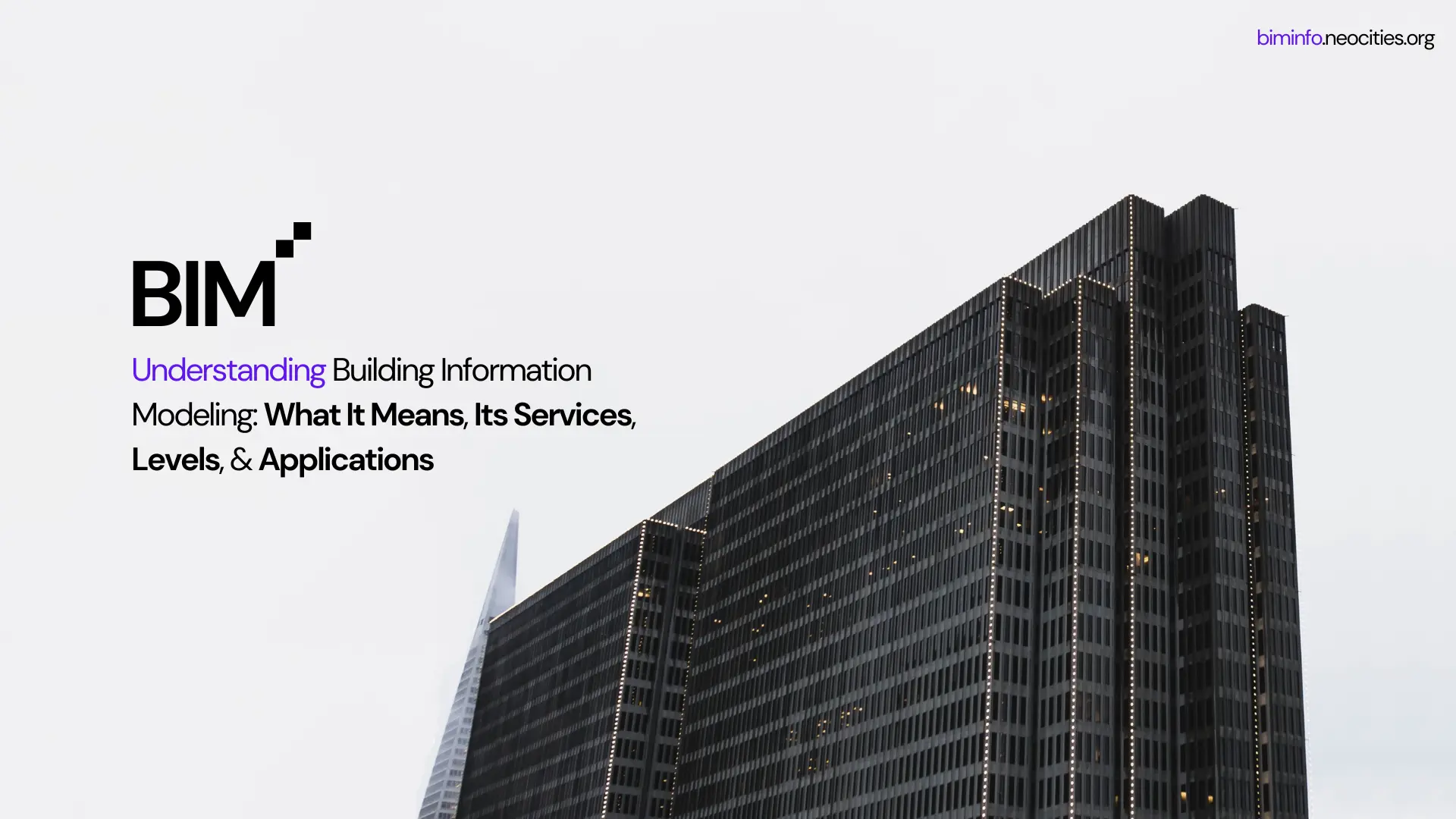
BIM is the technology that has transformed the construction world by offering a more innovative, more efficient way to plan, design, and manage building projects. This blog is about what BIM is, what BIM services are, the levels of BIM, its applications in asset management, and what BIM means for the construction industry's future. So, if you're curious about what BIM is, what it is, and how it can work for your projects, you are in the right place!
What is BIM, and What Does It Stand For?
BIM stands for Building Information Modeling, which is a digital tool that melds the material and functional parts of a building. It is the development of 3D digital models to visualize, simulate, and optimize the design and build before it even starts building. And BIM doesn't end with 3D modeling. It's the complete build process: design, coordination, planning, and operation throughout the building lifecycle. BIM ensures that everyone involved — architects, engineers, contractors, and facility managers — has the same standard model to work with, eliminating errors, saving money, and making projects go more smoothly.
BIM is the foundation for data and resource management in construction, which helps us communicate and deliver projects more efficiently.
What Are BIM Services?
BIM services are professional services that incorporate Building Information Modeling concepts into construction work. These services offer BIM modeling expertise, BIM Model management, and BIM use to support collaboration and decision-making at all project stages.
BIM services typically include:
- 3D design: Design digital models of buildings.
- Clash detection: Detecting and fixing conflicts between different building systems (such as electrical and plumbing).
- Simulated building: Seeing the layout during construction.
- Cost Estimation: Accurate and recent cost estimates can be given with BIM.
- Facility Management: Building management with the help of BIM models after construction.
These services are necessary to ensure a project stays on track, arrives on time, and within budget. BIM services help optimize the design and construction phase and allow you to maintain the building management after the project.
Worth the Read:
This is the most recent press release of Tesla Outsourcing Services, a leading provider of BIM services , leading beacuse they have completed over one thousand complex BIM projects over the tenure of 18 years, the press release shocases their top most complex BIM projects of 2024. Read The Release
What Are the 4 Levels of BIM?
One of the most essential concepts in BIM is its levels. The 4 levels of BIM represent different stages of digital integration and collaboration. Understanding these levels helps assess where a project stands regarding BIM adoption.
- Level 0 BIM: No collaborations, just basic 2D CAD drawings.
- Level 1 BIM: Some integration with 2D and 3D CAD, but not 100%.
- BIM Level 2: 100% inter-discipline, 3D models, shared (not real-time) model.
- BIM Level 3: Full integration, with real-time data sharing and all teams making real-time decisions.
Each level increases collaboration, sharing, and digital modeling, which results in faster and simplified projects.
What is Asset Management in BIM?
Asset Management in BIM refers to using BIM models to organize, track, and manage a building or infrastructure's material and functional parts over its life cycle. BIM is an asset management solution for every asset in a building — from design to operation and, ultimately, demolition.
Benefits of Asset Management with BIM:
- Preventive maintenance: Learn before they need maintenance and save money.
- Asset Lifecycle Management: Track asset performance so upgrades and replacements can be made promptly.
- Effortless workflow: Improve building management with the correct data at the right time.
Asset management with BIM lets owners and operators better control their facilities in a way that delivers longer-term results and reduces costs.
What Are BIM Requirements?
When you are looking to adopt BIM, there are specific BIM requirements that you must adhere to for it to work:
- Tools: Modeling and modeling are done with specific BIM software (e.g., Revit, ArchiCAD).
- Standards of collaboration: There should be rules for sharing data and working on the model among teams.
- Code of conduct: Standards and procedures such as ISO 19650 support how teams handle data.
- Training: BIM tools and processes should be trained to the level that all project members are trained on to make collaboration and implementation of the system seamless.
These are the most essential requirements to ensure BIM gets done correctly for better project delivery and benefits in the long term.
What Does BIM Mean for the Future of Construction?
BIM is disrupting the construction business. With more and more projects moving towards BIM, you'll see that it enables faster communication, fewer mistakes, better utilization of resources, and reduced costs. And the impact doesn't end with the building: BIM can impact a building's entire life cycle, from planning and construction to servicing and restoration.
Conclusion
BIM (Building Information Modeling) has changed how construction gets executed, collaborates, and makes decisions more efficiently. From understanding what BIM is and what BIM services include to exploring the levels of BIM and its role in asset management, it's clear that BIM is more than just a technology—it's a comprehensive methodology for modern construction practices.
And the more the industry takes up BIM, the better. Construction teams can mitigate errors and money and build faster, better-quality work with BIM. Whether you're a designer, builder, or facility manager, BIM is the solution to optimizing how we design and operate our planet.